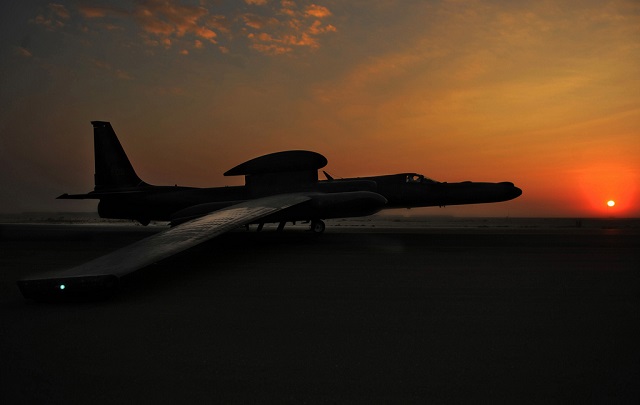Lockheed Martin Skunk Works is designing a next-generation high-altitude, long-endurance (HALE) surveillance airplane, known internally as RQ-X or UQ-2, as an optionally-manned successor to the U-2 and Northrop Grumman RQ-4 Global Hawk.
U-2 programme officials told reporters at the Skunk Works headquarters in Palmdale, California, that its engineers have been mulling designs for stealthy HALE platform that would combine the best of the U-2 and its unmanned rival, the Global Hawk.
The advanced research and development arm of Lockheed is essentially pursuing an improved version of the U-2, which is powered by the same General Electric F118 engine and optimised to fly at 70,000ft or higher. It would carry many of the same sensors, since those are already calibrated for use at that altitude. The biggest difference will be the aircraft’s low-observable characteristics.
“Think of a low-observable U-2,” says Scott Winstead, Lockheed’s U-2 strategic development manager. “It’s pretty much where the U-2 is today, but add a low-observable body and more endurance.”
The disclosure comes on the 60th anniversary of the U-2 programme, and as stagnant defence budgets force the Pentagon to choose between retiring the U-2 or Global Hawk.
The US Air Force has no formal requirement for a U-2 successor, nor has it released a time frame for when it might start pursing a next-generation HALE platform.
But U-2 programme director Melani Austin says Skunk Works see a future need and would be remiss to not have something in development.

US Air Force
Skunk Works is famous for delivering the first U-2A in under one year in 1955, and returning 15% of the development cost to the government for underrunning the contract. Austin says with funding and a clear and stable requirement, Skunk Works could again rapidly deliver a next-generation aircraft with far more capability than either the U-2 or Global Hawk.
“The reason we were able to get that first aircraft built so quickly is because there was a really clear requirement, and it didn’t change and didn’t shift,” she says. “We were given the money and told get it done. A clear requirement makes a very straightforward design.”
Winstead went further, saying there should be a competition where Skunk Work’s design could be measured against the best proposals from industry heavy-weights like Northrop Grumman, Boeing and General Atomics Aeronautical Systems. “Let’s see you beat our design,” he says.
Lockheed’s pursuit of a new aircraft is the latest twist in a long-running saga that has seen the U-2 compete against the RQ-4 for funding, even though the two were originally meant to be complimentary platforms. The air force’s latest budget plan retires the U-2 in 2019, even though fatigue tests show the aircraft is structurally fit to fly through 2045.
Lockheed has previously proposed “un-manning” the U-2, but proposals submitted to the air force in 2001 and 2009 never gained traction.
Lockheed finds itself in this position partly because its RQ-3 DarkStar, a stealthy unmanned aircraft designed to fly where the U-2 and Global Hawk couldn’t, never made it past flight testing and was cancelled.
These days, though, Lockheed isn’t chasing a solely unmanned design. In fact, the new aircraft would probably be built around same cockpit as the U-2.
According to Winstead, having a pilot on board is deterrent, because to shoot an unarmed aircraft down would be an act of war – whereas North Korea, for instance, would not hesitate attacking an unmanned aerial vehicle. Plus, the U-2 is often used for political signalling.
Winstead says the U-2’s successor should be “something you can see when you want to see it,” and Skunk Work’s RQ-X will be “survivable, but not unnoticeable”.
Source: FlightGlobal.com























